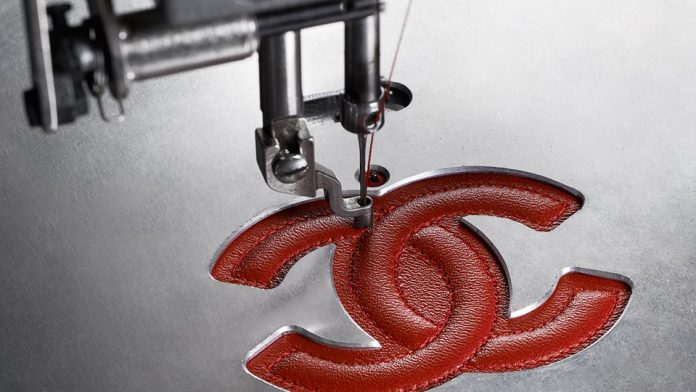This article is written by Shefali Chitkara, from VIPS.
Table of Contents
Introduction
Intellectual Property Law consists of several rules for securing and enforcing legal rights to inventions, designs and other artistic works. It is a broad term which applies to many different types of original creations. In this article, the author has focused on the IPR Laws that are applicable to the fashion industry. One of the greatest industries in India is the fashion industry. Whenever something new emerges, it is generally followed by duplicates, which make it necessary for the protection of original work. The article elaborates the reason behind creation of copies of the original work and the need for IPR laws applicable to it. Further, it discusses some of the laws applicable in this fashion industry like Trademark, Copyright, Patent, Industrial Design, etc. It also suggests some of the ways to tackle this problem to protect the original creators/designers. Strict laws and making people aware of the frauds are two options and there are many more which have been discussed below.
“Just like the democracy of India, fashion industry is too diverse”. People are attracted to almost everything new they come across. This often makes it a very competitive sector of the economy. Who in today’s world doesn’t like to wear a lehenga designed by Manish Malhotra or Sabyasachi Mukherjee? Who doesn’t like to have a GUCCI bag or a Rolex wrist-watch? Almost everyone would like to have such expensive and originally designed stuff. People in today’s world have a general affinity towards fashion and they tend to show their fashion sense by buying different branded products. What’s the problem then? The answer is ‘Money’ which is a constraint to such an effort and that is where copies of the original creations come to the rescue.
What is the need for such laws?
When the designs become famous, the risk of copying increases and it is then copied shamelessly resulting in a huge loss for the markets of the original products. It also poses a huge threat to the economy due to the government’s loss of revenue. We can say that IPR and fashion are wedded to each other. The designs created which are accepted as fashions are the intellectual creations of an individual and the law of our land protects the creators and gives them exclusive rights to use such creations and exploit them to reap monetary benefits.[1] Thus, there is a huge correlation between the fashion on one hand and IPR on the other.
Laws applicable in this industry
Unlike France, where buyers of a counterfeit product are criminally liable for buying it, India doesn’t have any such law. Here, owners of the original products can seek permanent injunctions from the court of law of appropriate jurisdiction and prevent the counterfeiters from selling counterfeit products. They may also seek compensation for their losses. The plethora of laws namely the Trademark Act, 1999; Copyright Act, 1957; Designs Act, 2000 and Geographical Indication of Goods Act, 1999 seeks to protect intellectual property rights related to the fashion industry.[2]
Trade marks
Section 2(1)(zb) of the Trade Marks Act, 1999, defines trade mark as “a mark which is capable of being represented graphically and is capable of distinguishing the goods or services of one person from others and may include shape of goods, their packaging and combination of colours.” It comes in play when a mark is incorporated in a fashion design.[3] It also helps to make distinction between genuine products and copied products. For protecting the brand or image of a product, the owner has to register their goods under the trademark law.
There was a case of Micolube India Ltd. v. Rakesh Kumar Trading as Saurabh Industries and others[4], in which the plaintiff used a registered design as a trademark. The judgement of this case has extended the scope of trademark protection in India. As a result, fashion designs registered under the Designs Act not only get protection from the Act but also from the Trademark Act.[5] Green-red-green strips of Gucci is an example and such marks are protected under the trademarks act.
To know more about IPR please visit
Copyright
Section 2(c) of Copyright Act, 1957 protects the artistic design work. It refers to a painting, drawing, sculpture, or any other work of artistic craftsmanship. It protects works that are original in nature. The design gets protection under the Copyright for the period of 10 years from the date of the registration.[6] It plays a crucial role in motivating a creator and thereby ensures that the illegal use of his creativity or skill is not obtained.[7]
There was a case of Ritika Apparels v. BIBA[8] in which one fashion brand lifted designs belonging to another fashion house and reproduced the same design in their product thereby causing loss to the original owner, Ms. Ritu Kumar. However, BIBA went scot-free using the lacunae of Section 15(2) of the Copyright Act, it states that if a creation that can be protected under the design law has not been registered with the design authorities and has been reproduced more than fifty number of times then it will be considered that the copyright in the same product has been lost forever.[9]
Patent
Patents are provided for the novel invention which is useful for the public. It refers to the new invention which includes new technology to manufacture products like shoes, fibers etc. A portfolio of patents may reflect technical superiority in inventing new fabrics that do not cease. This will attract business partners and investors.
Industrial design
The term “design” is defined under Section 2(d) and 4 of the Design Act, 2000. Design refers to the shape, pattern, colour of the product. The design act can not protect the full garment but protects the design, shape or pattern. For the protection, the design should be registered under the Design Act, 2000. Unregistered designs are not protected by the act and no one can claim damages for their unregistered designs. The aim of this act is to protect the work from the piracy. According to me, every design whether registered or unregistered should be protected under this act and the procedure for registration of the design should be simplified.[10] Also there are certain designs which can’t be registered, including designs featuring scandalous graphics.[11]
Some ways to tackle the problem
Even though there are legal protections available but most of the time it’s the innocent designers who are at fault. Designers now-a-days need to be more cautious about their creations and need to strategize accordingly. There are few more ways that should be adopted to protect the designers:
- Laws should be amended to make the purchaser also liable along with the seller of counterfeits.
- Enforcing the IPR laws in a more strict way by imposing criminal charges too on the counterfeiters.
- Increasing the limit of the commodities produced by industrial application from 50 to more numbers that would commensurate with the consideration of the rising population.
- Sensitizing the people and making them aware of the counterfeit goods and also the designers about the need of protecting their intellectual property in a correct way.[12]
Conclusion
The fashion industry is full of creativity and intellectual capital invested in it that should be protected in the form of IP assets which will serve to boost the income through sale, licensing, and commercialization of different new products to raise profit margins and improve market share. There is truly a need to review the range of safeguards that are available to fashion designs. Designers should educate themselves and should discover the best protection available for their designs. Though it is true that it is not possible to totally eradicate counterfeiting but if the creation is protected in a right way then the chances of loss are reduced. Thus, it is of high importance that the creators of IP should always be alert and should get the right protection for their creation.
References
- https://www.blog.ipleaders.in
- https://www.lexology.com
- https://www.mondaq.com
- https://www.altacit.com
[1] IPR laws applicable to the fashion industry in India, available at https://www.blog.ipleaders.in (last visited on June 5, 2020).
[2] Ibid.
[3] Significance of intellectual property in the fashion industry, available at https://www.lexology.com (last visited on June 6, 2020).
[4] In the High Court of Delhi at New Delhi, CS(OS) No. 1446/2011, decided on March 30, 2012.
[5] IPR laws applicable to the fashion industry in India, available at https://www.blog.ipleaders.in (last visited on June 5, 2020).
[6] Ibid.
[7] Role of IPR in the fashion industry, available at https://www.mondaq.com .
[8] In the High Court of Delhi at New Delhi, CS(OS) No. 182/2011, decided on March 23, 2016.
[9] IPR laws applicable to the fashion industry in India, available at https://www.blog.ipleaders.in (last visited on June 5, 2020).
[10] Ibid.
[11] IPR in the fashion industry, available at, https://www.altacit.com .
[12] IPR laws applicable to the fashion industry in India, available at https://www.blog.ipleaders.in (last visited on June 5, 2020).
LawSikho has created a telegram group for exchanging legal knowledge, referrals and various opportunities. You can click on this link and join:
 Serato DJ Crack 2025Serato DJ PRO Crack
Serato DJ Crack 2025Serato DJ PRO Crack










 Allow notifications
Allow notifications



